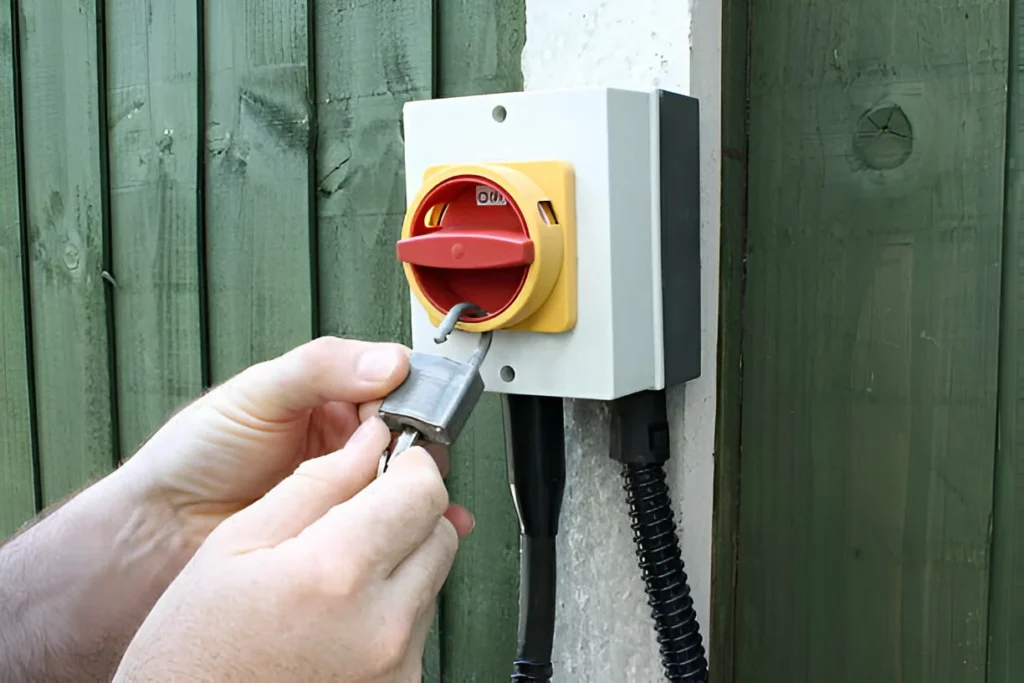What is a Isolator Switch?
Isolator Switch is a manually operated switch used to isolate the grid circuit, it is usually located in the meter box, demonstrating a reliable circuit disconnect capability to ensure that no current flows to the isolation position during maintenance or troubleshooting, so as to ensure the safety of workers.

What is the purpose of the Isolator Switch?
The Isolator Switch is used to disconnect the circuit with no load current, so that the device has a safe and obvious disconnection point from the power supply, providing safety protection for subsequent operators.
It should be noted that the isolator is best to disconnect the circuit after the circuit breaker cuts the circuit, because the circuit breaker can handle the arc that may be generated when switching the circuit, and the Isolator Switch cannot because the Isolator Switch has no arc extinguishing device.
When the decoupling device needs to be tested, the Isolator Switch can avoid hidden safety problems and make the work of switching connections safe.
Reverse operation: refers to the electrical equipment from one state to another state of operation, and the Isolator Switch is an important part of the reverse operation. The process of reverse operation: first disconnect the circuit breaker, open the load side Isolator Switch, and then open the power side Isolator Switch to complete the power outage operation; Close the power side Isolator Switch, then close the load side Isolator Switch, and finally close the circuit breaker to complete the power supply operation.

Type of Isolator Switch
Isolator Switches can be simply divided into three types: load break Isolator Switches, rotary Isolator Switches and closed Isolator Switches.
Load break Isolator Switch: The load break Isolator Switch is a device used to isolate the circuit in low-voltage applications, effectively isolating the fault part of the power supply from the live part, providing a safe and effective means of protection for emergency or peacetime maintenance of the electrical system.
Rotary Isolator Switch: A Isolator Switch that turns a circuit on or off by a marked “on” and “off” rotary button, usually used in industrial applications, safety, convenience, and ease of use are the advantages of rotary Isolator Switches. It can be used for AC or DC circuits and is available in a variety of sizes and current ratings.
Closed Isolator Switch: The closed Isolator Switch is characterized by the ability to lock when the circuit is closed and disconnected to prevent accidental opening, so that the additional safety features help reduce the risk of electrical accidents.

What appliances need Isolator Switches?
For distribution lines imported from outside the building, isolation devices need to be installed on the lines in the inner side of the building to facilitate maintenance. For later maintenance, isolation devices need to be installed on the main cable intake box and floor distribution box.
After the distribution box, it is also necessary to install independent Isolator Switches near some larger electrical equipment, such as air conditioners, refrigerators and water heaters.
The difference between Isolator Switches and circuit breakers
A circuit breaker is a switch that can break the overcurrent, and there are many differences between it and the Isolator Switch.
Use and function difference: Isolator Switch and circuit breaker can be used for the main switch of the distribution circuit, but the circuit breaker also provides overload and short circuit protection, can disconnect the circuit in the load state, and the Isolator Switch can not.
Internal structure difference: the internal structure of the Isolator Switch is relatively simple, and the circuit breaker in order to achieve more functions, the internal structure is relatively complex.
Disconnect the circuit mode difference: the Isolator Switch can only manually disconnect the circuit, and the circuit breaker can manually disconnect the circuit, but also automatically disconnect the circuit when the short circuit and overload situation occurs.
